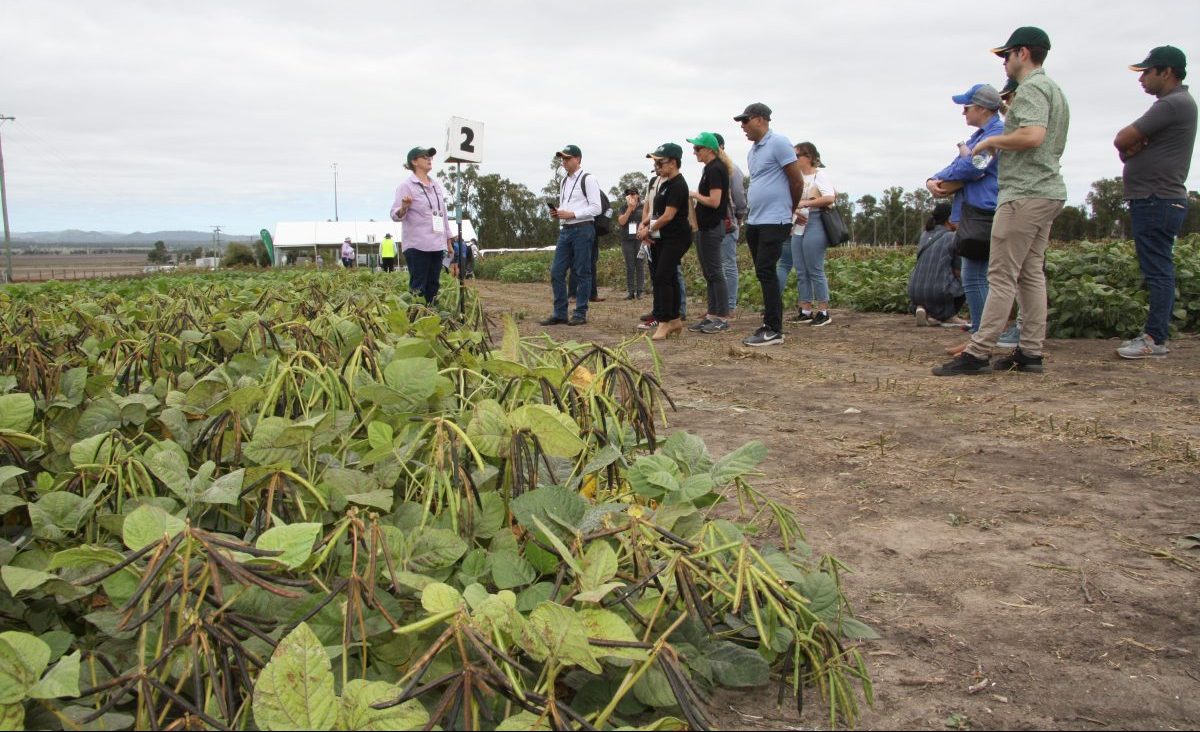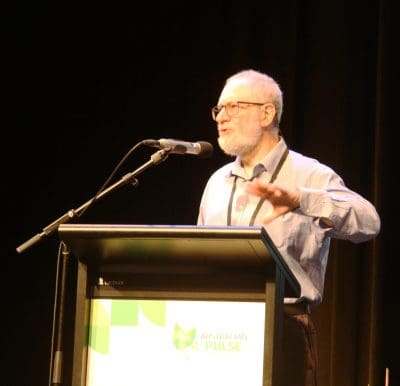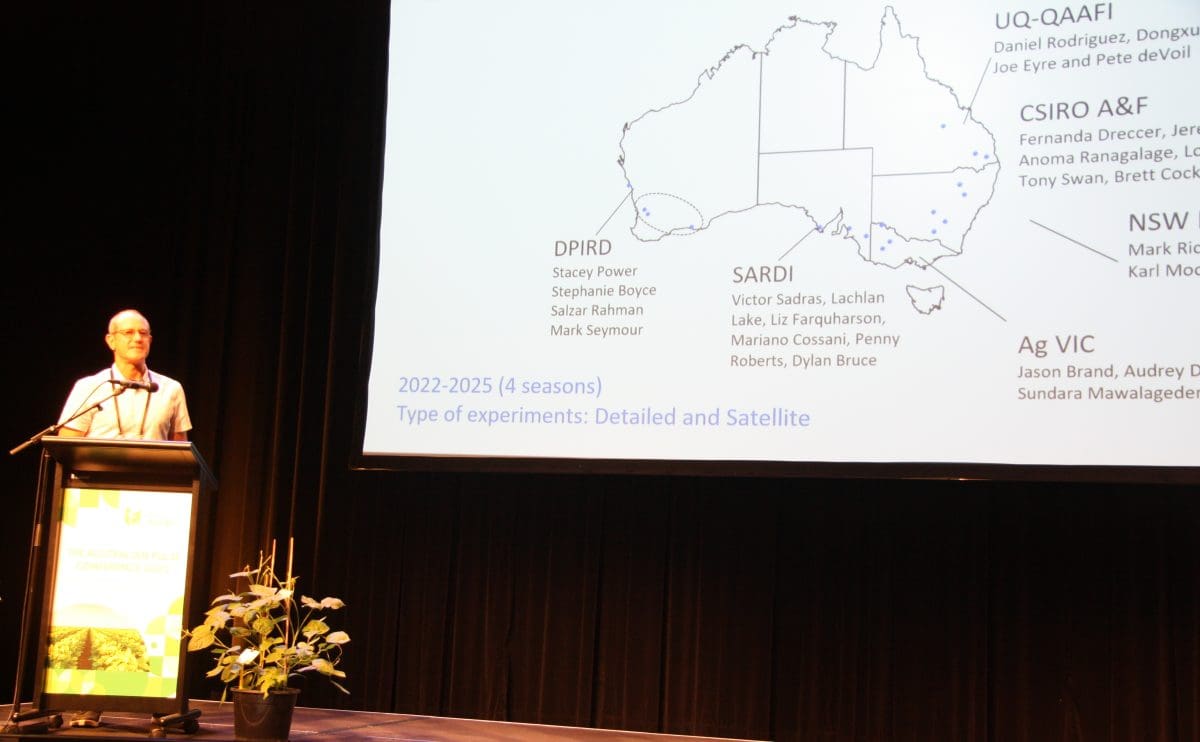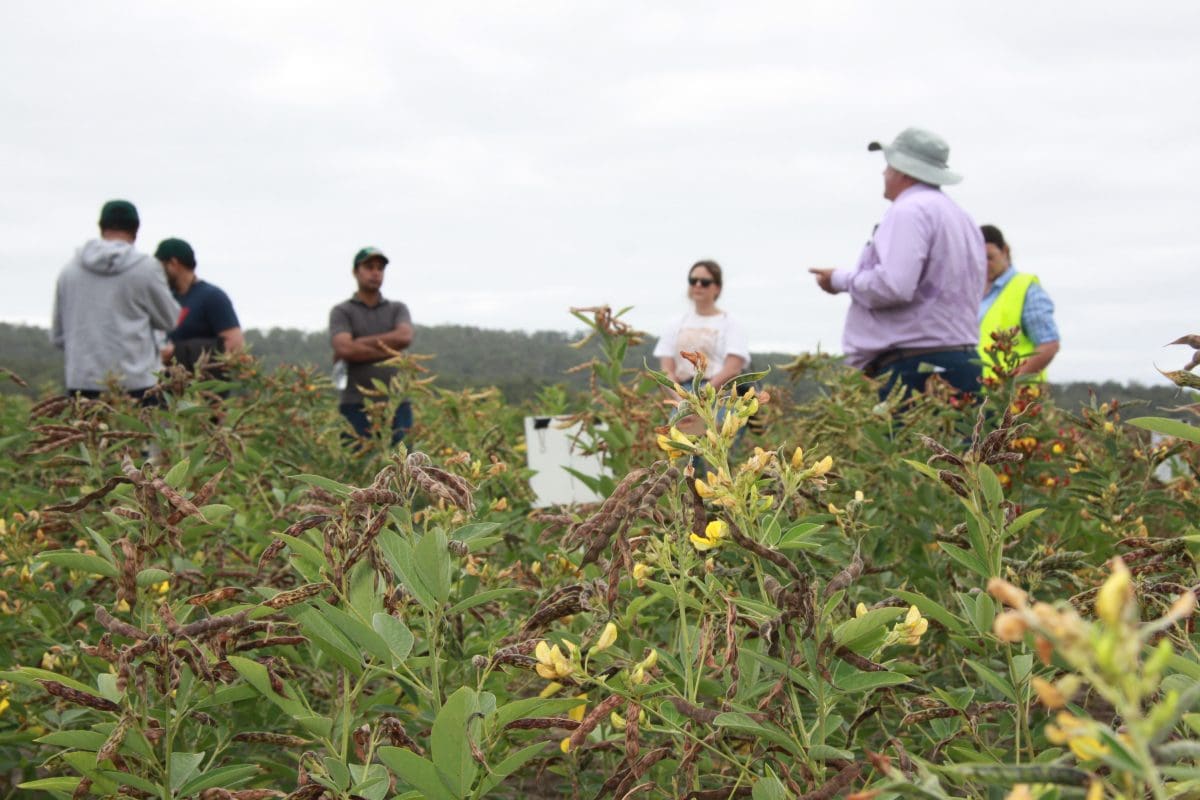
QDAF principal mungbean breeder Dr Merrill Ryan outlines varieties available and those in the pipeline during her presentation at Hermitage Research Facility.
NEW varieties and improved agronomic practises have lifted Australia’s pulse industry to a new level of impact and maturity, and an outline of some of the science behind its bright future was showcased at the Australian Pulse Conference in Toowoomba this week.
APC23 was the first national pulse conference to be held since 2019.
In the intervening years, ABARES figures indicate Australia has broken production records for two of its major pulse crops.
Lentils reset the bar at 1.4Mt in the harvest just gone, while faba beans set a new record of 680,000t in 2020-21.
Chickpeas’ biggest harvest of recent years was 1.1 Mt 2021-22, almost half the 2016-17 record of 2Mt, as India’s tariff and some tough seasons impact production.
Australia is one of the world’s major exporters of all three abovementioned pulses, as well as field peas, lupins and mungbeans, and delegates at APC23 got to hear where science is taking pulses and legumes as cash crops, in changing diets, and in farming systems.
National project lifts prospects
South Australian Research and Development Institute Professor Victor Sadras spoke on the topic of Pulse ecophysiology: Low-hanging fruit and unique traits.

SARDI researcher Victor Sadras speaking at APC23.
Professor Sadras said equivalent research undertaken for cereals since the 1960s in Australia was being carried out in pulses now, and offered great opportunity for investment.
“Research is lagging in pulses versus cereals; that’s global,” Professor Sadras said.
“The result is there is low-hanging fruit.”
“We are coming from a lag of 50 years.”
Professor Sadras said the growth of the pulses in Australia now being seen was helping it to close the gap.
“Australia is not there, but is getting close to critical mass.”
Aside from the many research projects that are embracing technology on everything from genetic selection to monitoring crop canopies prior to harvest, APC23 delegates learned about the National Pulse Agronomy Project, or NaPA.
Speaking on the topic was CSIRO researcher Dr Jeremy Whish, who said NaPA looked to standardise data being collected across Australia into colour-coded growth stages.
“We’re not just collecting data in the field traditionally.”

CSIRO’s Dr Jeremy Whish explains the National Pulse Agronomy Project to APC23 delegates.
Dr Whish said thermal and 3D cameras, as well as EM38 soil mapping and soil coring, were being used to build data in NaPA.
NaPA is funded by the Grains Research and Development Corporation, and involves teams working in every mainland state.
“We want to work with everybody”.
Dr Whish’s statement drove home an underlying theme of APC23 about the importance of collaboration involving breeder, agronomists, growers and marketers.
Findings in the field
The third and final day of APC23 comprised a field tour.
Hosted by the Australian Mungbean Association, it featured a visit to the Queensland Department of Agriculture and Fisheries’ Hermitage Research Facility east of Warwick, followed by the delegates’ choice of an agronomy, processing and research tour.
At Hermitage, six presentations brought delegates up to date with the latest in peanuts, soybeans, plant populations with relation to weeds, pulse storage, and two aspects of mungbeans.

QDAF breeder Bruce Winter talks pigeon peas to APC23 delegates on their visit to the Hermitage Research Facility.
QDAF’s Dr Merrill Ryan gave a rundown on the mungbean-breeding program she heads which is developing varieties suited to tropical, sub-tropical and temperate climates, while QDAF’s Cameron Silburn spoke about the practice of swathing instead of direct-heading mungbeans as an option at harvest.
QDAF researcher Bruce Winter spoke about work under way in the development of pigeon pea as a an alternative to mungbeans in drier parts of the summer-cropping region, while QDAF grain-storage expert Philip Burrill shared some guidelines for minimising pest risk to pulses in silos.
These are outlined in the Queensland Government’s Pulse Storage Best Management Practice Guide, released last year following a three-year research project.
Grain Central: Get our free news straight to your inbox – Click here



HAVE YOUR SAY